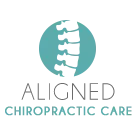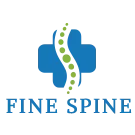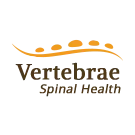Slipped, Bulging, Protruded and Herniated Discs
Discs normally have a direct blood supply. Unfortunately, studies have shown our discs lose their direct blood supply in the 18-25 year old range. From then on, our discs can only absorb fluids and nutrition from the surrounding tissues, like a sponge. This method is not as good as a direct blood vessel, and our disc begin to dehydrate and degenerate.
With disc degeneration progressing, our normal activities of daily living result in little cracks and tears in the discs. This damage to the disc can result in chemicals released, like smoke from a fire, which irritates the neighboring nerves and results in pain. The cracks and tears also make the disc more susceptible to larger tears and displacement of the nucleus pulposus (jelly) through the annular fibers (dough) of the disc (jelly squeezing through the doughy fibers of a jelly filled donut).
These displacements can range from a minimal bulge, to a larger protrusion, to a larger herniation, to complete rupture of the nucleus pulposus (jelly) from the center of the disc (donut). Among many other factors, the severity of pain often depends on:
- if the disc is giving off irritating chemicals (inflammatory proteins),
- if the disc is laying next to the nerve, but not displacing it, or
- if the disc is compressing and/or displacing the nerve.
The most common signs and symptoms, which a patient may be experiencing from a disc problem, are numbness and tingling through their arms or legs (depending on the location of the disc), which is quite often accompanied by sharp severe radiating pain.
Discs, which are bulging or pinching a nerve, can be a very serious condition. Dr. Dunn has the experience and expertise to diagnosis and treat discs problems.
Dunn Chiropractic & Rehab has special therapies and equipment, designed to treat disc conditions. With proper treatment, the pain and other symptoms associated with disc conditions can be successfully eliminated, and surgical intervention can be avoided.
When the patient presents with a disc condition, which requires surgical intervention, Dr. Dunn will refer the patient to a qualified surgeon.
Degenerative Discs (Cervical & Lumbar)
Nerves to the disc only penetrate into the very outer portion of the annulus fibrosus. Even though there is very little innervation to the disc, the disc can become a significant source of back pain, if a tear in the disc reaches the very outer portion of the annulus, where the nerves are located, and the nerves become sensitized.
With continued degeneration of the disc, the nerves on the periphery of the disc will actually grow further towards the center of the disc, where it is easier for them to become a source of pain.
If this jelly-like material leaks out of the disc and comes in contact with a nerve root, it will inflame the nerve root and create pain down the leg (sciatica or lumbar radiculopathy) or down the arm (cervical radiculopathy), depending on the location in the spine.
In the same manner, if any of the inflammatory proteins within the nucleus of the disc leak into the outer annulus and touch the pain fibers in this area, it can create severe pain in the neck or the lower back, again, depending on the location of the disc in the spine.
When we are born, the disc is comprised of about 80% water, which gives it a spongy quality (fresh jelly donut) and allows it to function as a “shock absorber.” As we age and degenerate, the water content decreases, and the disc becomes less capable of acting as a shock absorber (stale jelly donut). In addition, the proteins within the disc change composition; thus, as our disc degenerates, most of us will develop tears into the annulus fibrosus (the tough outer layer of the disc). Most people will have some level of disc degeneration by their sixth decade.
It must also be noted disc degeneration can lead to and hasten the onset of additional spinal conditions, such as: spinal stenosis, a form of spinal degeneration, which leads to nerve root or spinal cord pinching, and osteoarthritis of the spine, degenerative changes in the facet joints (the hinges on the back side of the vertebrae, which permit and control the directions of movement in the spine, similar to the hinges on your front door).
Generally, the pain associated with degenerative disc disease is thought to stem from two main factors: inflammation and “micromotion” instability.
The inflammatory proteins, contained within a lower back disc, can cause severe pain in the lower back and can radiate into the hips, down the back of the leg (called sciatica or lumbar radiculopathy) and possibly into the foot and toes. If the disc is located in the neck, the inflammatory proteins can cause severe pain in the neck and can radiate into the arm, shoulder and possibly into the hand and fingers (called a cervical radiculopathy).
If the annulus (the outer rings of the spinal disc) degenerates and wears down, it is not as effective in resisting motion in the spine. This condition is called "micromotion instability” because it is usually not associated with gross instability, such as a slipped vertebrae.
Both the inflammation and micromotion instability can cause severe pain and muscle spasms. The muscle spasm is the body's attempt to stabilize the spine. It is a reflex to protect the body and can be quite painful. These muscle spasms, which result from micromotion instability, are associated with the intense pain and acute exacerbations of a degenerative disc.
The two findings most correlated with a pathological disc (a degenerating disc, which is painful) are: cartilaginous end plate erosion and disc space collapse.
In between the vertebral body and the spinal disc is a layer of cartilage, which is known as the cartilaginous end plate. The cartilaginous end plate is the source of nutrition for the disc. If the cartilaginous end plate becomes eroded, the disc is likely to go through a degenerative process, which leads to the inflammation and micromotion instability, which in turn, causes an acute exacerbation of pain and muscle spasm. As the disc continues through the degenerative process, the disc space will collapse.
There are several symptoms, which are fairly consistent for people with lower back pain or neck pain, which is secondary to degenerative disc disease, including:
Pain, which is usually related to physical activity, will result in an acute exacerbation (flare up), but will return to a lower grade of pain, or the pain will go away entirely.
The amount of chronic pain, referred to as the patient's baseline level of pain, is quite variable between individuals. It can range from almost no pain (just a nagging level of irritation) to very severe and disabling pain. Activities, which involve bending, lifting, and twisting, will usually make the patient's pain worse. Certain positions can also make the pain worse. For example, for lumbar degenerative disc pain, the pain is generally made worse with the sitting posture, especially when sitting for long periods of time, since in the seated position, the lumbar disc is loaded with three times more pressure, than when standing. Walking, and even running, may actually feel better than prolonged sitting or standing. Patients will generally feel better, if they can change positions frequently. Patients with lumbar degenerative disc disease will generally feel better, when lying in a reclining position (such as, with the legs propped up in a recliner), or lying down with a pillow under the knees, since these positions decrease the gravitational pressure and stress on the lumbar disc.
Most patients with degenerative disc disease will have some underlying chronic low back pain or neck pain, with intermittent exacerbations of more severe pain. The cause of these exacerbations is believed to be due to abnormal micromotion in the degenerated disc, which spurs the inflammatory reaction. In an attempt to stabilize the spine and stop the micromotion, the body reacts to the disc pain with muscle spasms. The reactive spasms are what make patients feel like their back has just "gone out of place."
Degenerative disc disease most commonly occurs in the cervical spine (neck) or the lumbar spine (lower back), as these areas of the spine have the most motion, and therefore, are most susceptible to wear and tear.
As a final note, the severity of pain does not correlate with the need for surgery. Some non-surgical conditions may produce very severe pain and muscle spasms, while some surgical conditions may have rather low levels of pain.
The goals for treatment of degenerative disc disease usually include:
- Decrease the pain, muscle spasms and swelling;
- Decrease spinal fixations (hypomobile segments) to increase segmental and regional ranges of motion;
- Participate in a rehab exercise program to stretch, strengthen and stabilize the spine, which helps to prevent future exacerbations; and
- Lifestyle modifications to help the patient develop a healthier lifestyle.
Degenerative disc disease can be a very serious condition. Dr. Dunn has the experience and expertise to diagnosis and treat degenerative disc disease.
Dunn Chiropractic & Rehab has special therapies and equipment, designed to treat degenerative disc disease. With proper treatment, the pain and other symptoms associated with degenerative disc disease can be successfully eliminated, and surgical intervention can be avoided.
When the patient presents with a disc condition, which requires surgical intervention, Dr. Dunn will refer the patient to a qualified surgeon.






